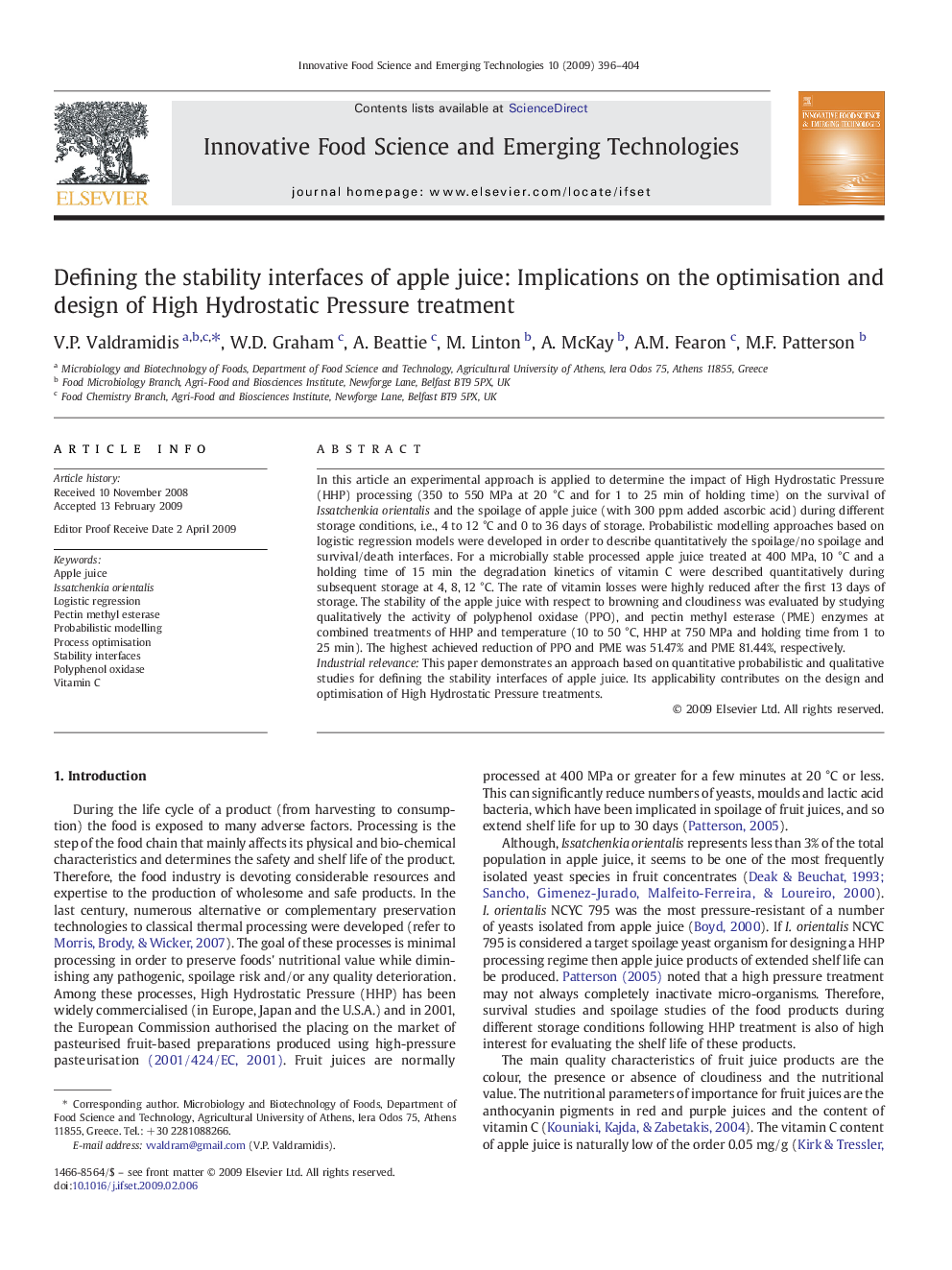| Article ID | Journal | Published Year | Pages | File Type |
|---|---|---|---|---|
| 2087048 | Innovative Food Science & Emerging Technologies | 2009 | 9 Pages |
In this article an experimental approach is applied to determine the impact of High Hydrostatic Pressure (HHP) processing (350 to 550 MPa at 20 °C and for 1 to 25 min of holding time) on the survival of Issatchenkia orientalis and the spoilage of apple juice (with 300 ppm added ascorbic acid) during different storage conditions, i.e., 4 to 12 °C and 0 to 36 days of storage. Probabilistic modelling approaches based on logistic regression models were developed in order to describe quantitatively the spoilage/no spoilage and survival/death interfaces. For a microbially stable processed apple juice treated at 400 MPa, 10 °C and a holding time of 15 min the degradation kinetics of vitamin C were described quantitatively during subsequent storage at 4, 8, 12 °C. The rate of vitamin losses were highly reduced after the first 13 days of storage. The stability of the apple juice with respect to browning and cloudiness was evaluated by studying qualitatively the activity of polyphenol oxidase (PPO), and pectin methyl esterase (PME) enzymes at combined treatments of HHP and temperature (10 to 50 °C, HHP at 750 MPa and holding time from 1 to 25 min). The highest achieved reduction of PPO and PME was 51.47% and PME 81.44%, respectively.Industrial relevanceThis paper demonstrates an approach based on quantitative probabilistic and qualitative studies for defining the stability interfaces of apple juice. Its applicability contributes on the design and optimisation of High Hydrostatic Pressure treatments.
